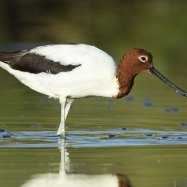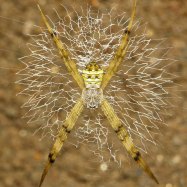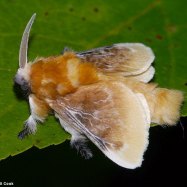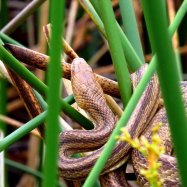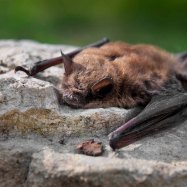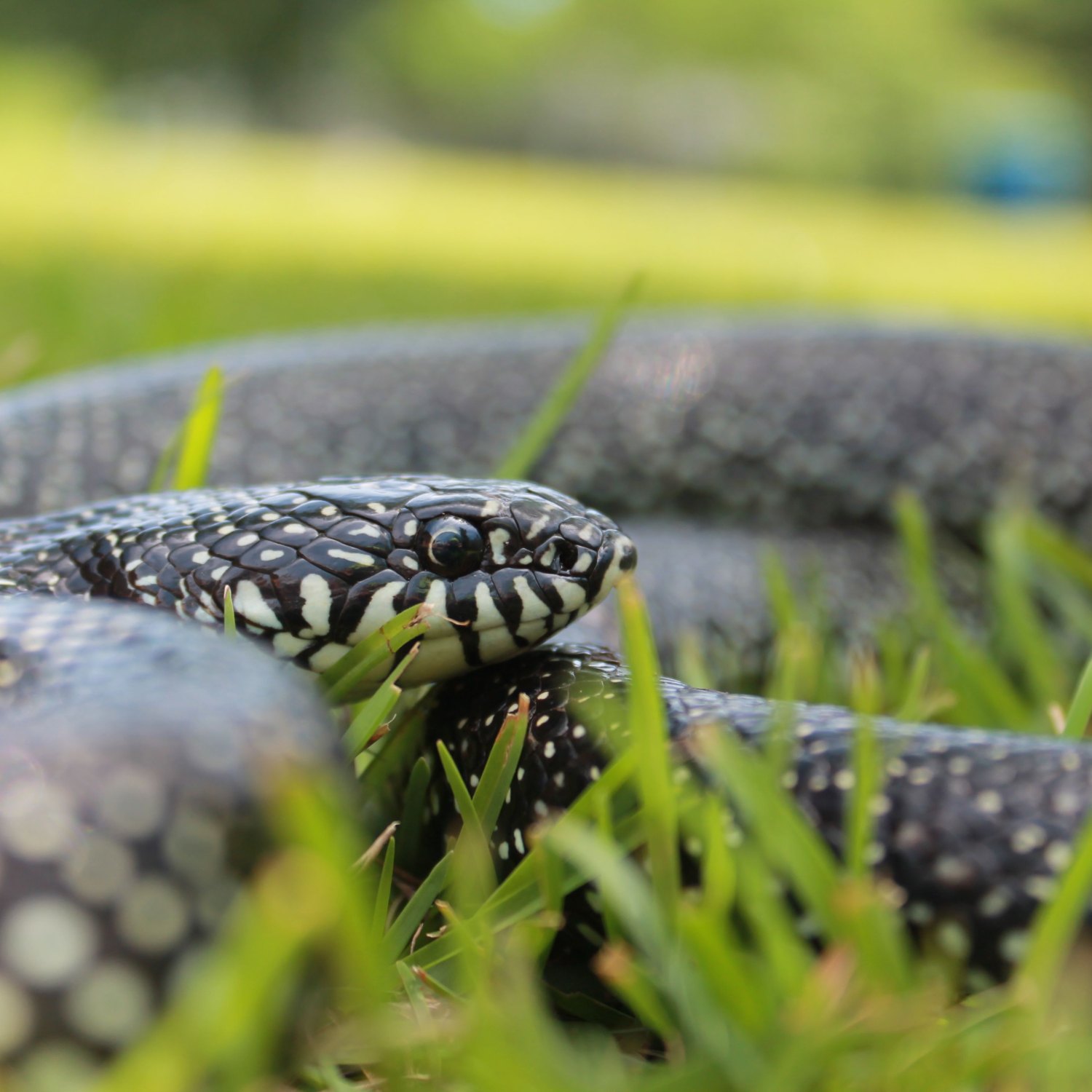
Speckled Kingsnake
Adult Speckled Kingsnakes can reach a length of 2.5 to 4.5 feet (0.8 to 1.4 meters).
Did you know that the Speckled Kingsnake, found in the Southeastern United States, can grow up to 4.5 feet long? This non-venomous snake, belonging to the Colubridae family, has a slender body and smooth scales. Don't be scared of its slightly flattened head and tapered tail, as they are harmless and even beneficial by controlling rodent populations. #SpeckledKingsnake #SoutheasternUS #snakefacts #Colubridae
Animal Details Summary:
Common Name: Speckled Kingsnake
Kingdom: Animalia
Habitat: Speckled Kingsnakes can be found in a wide range of habitats including forests, grasslands, swamps, and rocky areas. They are often found near water sources such as streams and rivers.
The Beautiful Speckled Kingsnake: A Master of Camouflage
The world of snakes is filled with a diverse array of species, each with its unique appearance and behavior. One such species that stands out among the rest is the Speckled Kingsnake, also known as Lampropeltis getula holbrooki. With its striking speckled pattern and impressive hunting skills, this reptile has captured the attention of many animal enthusiasts.Belonging to the phylum Chordata and the class Reptilia, the Speckled Kingsnake is a magnificent creature found in the southeastern region of the United States Speckled Kingsnake. Its sleek body, distinct coloration, and impressive hunting abilities make it a fascinating subject for study. In this article, we will take a closer look at this unique serpent and unravel the mysteries behind its impressive features.
The Habitat and Distribution of the Speckled Kingsnake
One of the most remarkable traits of the Speckled Kingsnake is its adaptability to different habitats. This species can be found in a variety of places, including forests, grasslands, swamps, and rocky areas. They are also known to inhabit places near water sources such as streams and rivers, making them excellent swimmers. This diverse habitat allows them to thrive in a wide range of locations and increases their chances of finding prey.Speckled Kingsnakes have a relatively large geographical distribution, primarily found in the southeastern states of the United States. These include Texas, Oklahoma, and Louisiana. They have also been spotted in Arkansas, Mississippi, and parts of Alabama and Florida Slug. Within these states, they can be found in various types of terrain, including mountains, plains, and coastal regions.
An Impressive Feeding Method
Much like other snakes, the Speckled Kingsnake is carnivorous, meaning it feeds on other animals. Their preferred diet includes rodents, lizards, birds, and other snakes, making them vital for controlling pest populations in their habitat. With their excellent hunting abilities, they play a crucial role in maintaining the balance of their ecosystem.While hunting, Speckled Kingsnakes use a combination of stealth, agility, and powerful constriction to capture their prey. They are skilled ambush predators and can use their speckled coloration to blend into their surroundings, making them almost invisible to their prey. Once they have found their target, they strike with lightning speed, immobilizing their prey with their sharp teeth before squeezing it to death. This feeding method is both efficient and effective, making them the ultimate predators of their habitat.
The Speckled Appearance of the Kingsnake
One of the most striking features of the Speckled Kingsnake is, without a doubt, its speckled appearance. This snake's name is derived from the distinct black or dark brown speckles that cover its light gray, tan, or cream-colored body. The speckles become more prominent towards the tail, creating a mesmerizing pattern that makes the snake stand out among its surroundings.The speckled coloration serves not only as an aesthetic feature but also as a means of camouflage. It allows the snake to blend seamlessly into its environment, making it difficult for predators to spot. The speckled pattern varies in each individual snake, making each of them unique in appearance. This unique trait has made the Speckled Kingsnake a highly sought-after species in the pet trade industry.
The Physical Characteristics of the Speckled Kingsnake
In addition to its distinctive coloration, the Speckled Kingsnake possesses other physical characteristics that make it a formidable predator. This species has a slim and elongated body, with smooth scales that allow for easy movement. They have a slightly flattened head and a tapered tail, making them excellent climbers. This body shape also enables them to move swiftly through narrow crevices and burrow into the ground to hunt for prey.The average adult Speckled Kingsnake can reach a length of 2.5 to 4.5 feet (0.8 to 1.4 meters), with the females being slightly larger than males. They have a relatively long lifespan, with some individuals living up to twenty years in captivity. As they age, their colors become more muted, and their speckled pattern may fade, making them harder to spot in their natural habitat.
In Conclusion
In conclusion, the Speckled Kingsnake is a remarkable species of snake that continues to captivate the attention of many. Its diverse habitat, impressive feeding method, unique coloration, and physical characteristics make it a highly adaptable and successful predator. As we continue to learn more about this species, it is essential to ensure its protection and preservation for future generations to appreciate and admire. So, the next time you happen to come across a Speckled Kingsnake, remember to appreciate its beauty and its critical role in maintaining the delicate balance of its ecosystem.

Speckled Kingsnake
Animal Details Speckled Kingsnake - Scientific Name: Lampropeltis getula holbrooki
- Category: Animals S
- Scientific Name: Lampropeltis getula holbrooki
- Common Name: Speckled Kingsnake
- Kingdom: Animalia
- Phylum: Chordata
- Class: Reptilia
- Order: Squamata
- Family: Colubridae
- Habitat: Speckled Kingsnakes can be found in a wide range of habitats including forests, grasslands, swamps, and rocky areas. They are often found near water sources such as streams and rivers.
- Feeding Method: Carnivorous
- Geographical Distribution: Speckled Kingsnakes can be found in the United States, primarily in the southeastern states including Texas, Oklahoma, and Louisiana.
- Country of Origin: United States
- Location: Southeastern United States
- Animal Coloration: Speckled Kingsnakes have a distinct pattern of black or dark brown speckles on a light gray, tan, or cream-colored background. The speckles become more pronounced towards the tail.
- Body Shape: Speckled Kingsnakes have a slender body with smooth scales. They have a slightly flattened head and a tapered tail.
- Length: Adult Speckled Kingsnakes can reach a length of 2.5 to 4.5 feet (0.8 to 1.4 meters).
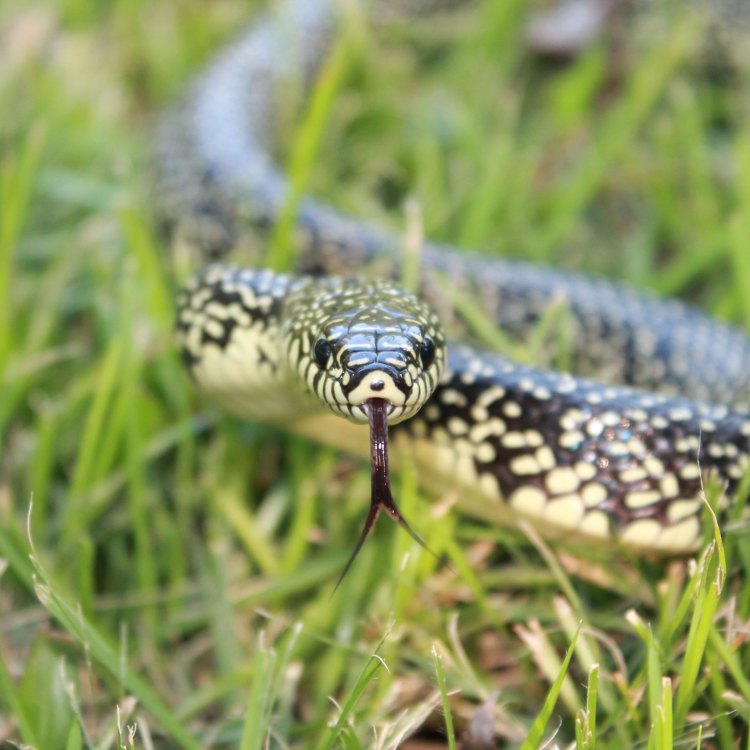
Speckled Kingsnake
- Adult Size: Adult Speckled Kingsnakes are medium-sized snakes.
- Average Lifespan: Speckled Kingsnakes have an average lifespan of 12 to 15 years in the wild.
- Reproduction: Speckled Kingsnakes are oviparous, meaning they lay eggs.
- Reproductive Behavior: Speckled Kingsnakes mate in the spring and females lay eggs in early summer. The eggs hatch after an incubation period of around 2 months.
- Sound or Call: Speckled Kingsnakes are generally silent, but may produce hissing sounds when threatened.
- Migration Pattern: Speckled Kingsnakes do not migrate long distances, but they may move to different habitats in search of food or suitable breeding sites.
- Social Groups: Speckled Kingsnakes are solitary animals and do not form social groups.
- Behavior: Speckled Kingsnakes are primarily nocturnal, meaning they are most active at night. They are excellent climbers and may be found in trees or shrubs. They are also good swimmers.
- Threats: The main threats to Speckled Kingsnakes include habitat loss and fragmentation, road mortality, and persecution by humans due to fear and misunderstanding.
- Conservation Status: The Speckled Kingsnake is listed as a species of least concern by the International Union for Conservation of Nature (IUCN).
- Impact on Ecosystem: Speckled Kingsnakes play an important role in controlling rodent populations, as they are voracious predators of mice and rats.
- Human Use: Speckled Kingsnakes are sometimes kept as pets.
- Distinctive Features: One of the distinctive features of the Speckled Kingsnake is its speckled pattern. They also have a red or orange colored band across their neck. They have smooth scales and a slightly flattened head.
- Interesting Facts: 1. Speckled Kingsnakes are immune to the venom of their prey, which includes venomous snakes. 2. They are known for their gentle temperament and are often kept as pets. 3. Speckled Kingsnakes are constrictors, meaning they squeeze their prey to subdue it before swallowing it whole.
- Predator: Speckled Kingsnakes have few natural predators, but they may be preyed upon by larger snakes, birds of prey, or mammals.
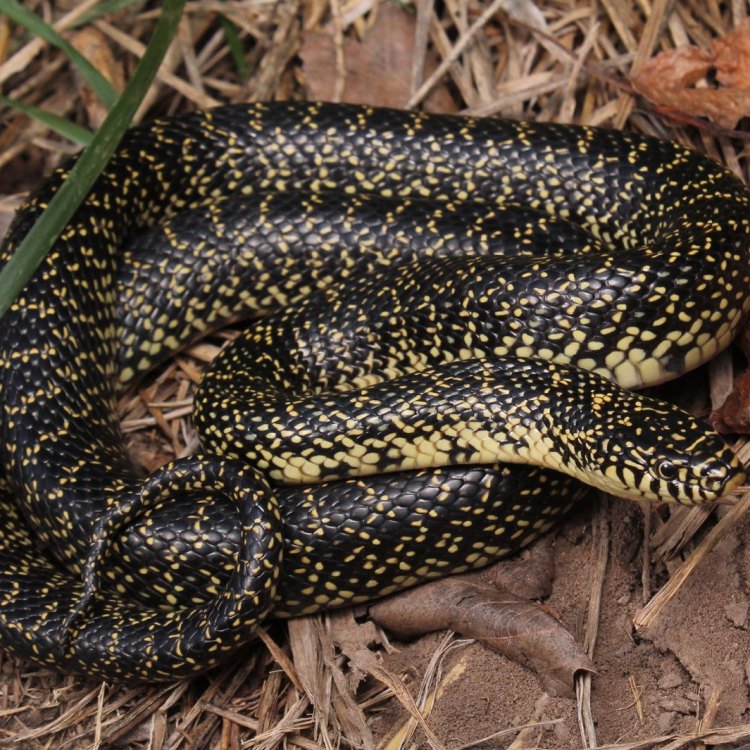
Lampropeltis getula holbrooki
The Colorful and Enigmatic Speckled Kingsnake
When you think of a snake, the first thing that probably comes to mind is fear and danger. However, not all snakes are venomous or aggressive. In fact, some species are quite beautiful and fascinating creatures. One such species is the Speckled Kingsnake, a medium-sized snake with a unique speckled pattern and a gentle temperament PeaceOfAnimals.Com. In this article, we will delve into the world of the Speckled Kingsnake and discover what makes them distinct and important in their ecosystem.The Basics of Speckled Kingsnake
Speckled Kingsnakes, also known as Lampropeltis holbrooki, are non-venomous snakes native to the southeastern United States. They are medium-sized, with adult snakes usually growing up to 3-5 feet in length. They have a lifespan of 12 to 15 years in the wild, making them long-lived for a snake species.Speckled Kingsnakes are oviparous, meaning they lay eggs, and they reproduce in the spring. Females will lay eggs in early summer, and after an incubation period of around 2 months, the eggs will hatch. These snakes are solitary creatures and do not form social groups, except during breeding season.
The Reproductive Behavior of Speckled Kingsnake
Speckled Kingsnakes mate in the spring, and females lay eggs in the early summer. The males will often engage in a wrestling match, entwining their bodies and trying to overpower each other to gain the right to mate with a female Song Sparrow. Once a male and female have mated, the female will lay 5-13 eggs in a secluded area, such as under logs or rocks. The eggs will then take about 2 months to hatch, and the female does not stay to guard them.Sounds of Speckled Kingsnakes
Speckled Kingsnakes are generally silent, rarely producing any vocalizations. However, when they feel threatened, they may hiss to fend off predators or other threats. This sound is made by expelling air from their lungs through the glottis, a small opening in the throat.Migration Patterns and Social Behavior
Speckled Kingsnakes do not migrate long distances, but they may move to different habitats in search of food or suitable breeding sites. They are solitary animals and do not form social groups, except during breeding season when males may compete for the right to mate.The Behavior of Speckled Kingsnakes
Speckled Kingsnakes are primarily nocturnal, meaning they are most active at night. During the day, they will usually hide under logs, rocks, or in crevices to avoid the hot sun. They are also excellent climbers and may be found in trees or shrubs. They are also good swimmers and can be found near bodies of water.As constrictors, Speckled Kingsnakes use their powerful coils to squeeze and suffocate their prey before swallowing them whole. Their diet consists of small mammals, such as mice and rats, as well as other snakes, lizards, and birds.
The Threats to Speckled Kingsnakes and Their Conservation Status
The main threats to Speckled Kingsnakes include habitat loss and fragmentation, road mortality, and persecution by humans due to fear and misunderstanding. As their habitat is destroyed for development, these snakes are forced to move into smaller and isolated areas, making them more vulnerable.Fortunately, the International Union for Conservation of Nature (IUCN) has listed the Speckled Kingsnake as a species of least concern, meaning they are not at risk of extinction. However, efforts should still be made to protect their habitats and educate the public on the importance of these snakes in their ecosystem.
Impact of Speckled Kingsnakes on the Ecosystem
Speckled Kingsnakes play an important role in controlling rodent populations in their habitat. As voracious predators of mice and rats, they help keep their numbers in check, which in turn helps maintain a balance in the ecosystem. Without these snakes, rodent populations could grow uncontrollably and cause damage to crops and other plants.Human Use of Speckled Kingsnakes
Speckled Kingsnakes are sometimes kept as pets, thanks to their gentle temperament and beautiful pattern. However, it is important to remember that these snakes are still wild animals and require proper care and handling. It is also important to ensure that they are obtained from reputable breeders and not taken from the wild.Distinctive Features of Speckled Kingsnake
One of the most striking features of the Speckled Kingsnake is its speckled pattern, which gives it its name. The speckles can vary in color from gray to reddish-brown, and they are randomly scattered over the snake's body. They also have a distinct red or orange colored band across their neck, which adds to their overall beauty.In addition to their pattern, Speckled Kingsnakes also have other distinctive features. They have smooth scales, a slightly flattened head, and keeled scales on their belly, which helps them climb trees and shrubs with ease.
Interesting Facts
1. Speckled Kingsnakes are immune to the venom of their prey, which includes venomous snakes. This is due to a protein in their blood that neutralizes the venom.2. These snakes are known for their gentle temperament and are often kept as pets. They are docile and rarely show aggression towards humans.
3. Speckled Kingsnakes are constrictors, meaning they squeeze their prey to subdue it before swallowing it whole.
Predators of Speckled Kingsnakes
Speckled Kingsnakes have few natural predators, but they may be preyed upon by larger snakes, birds of prey, or mammals. Despite their relatively mild venom, they can still defend themselves against predators by hissing and biting if necessary.In conclusion, the Speckled Kingsnake may not be the most well-known or popular snake species, but they definitely have some unique and admirable characteristics. From their beautiful speckled pattern to their gentle temperament and important role in their ecosystem, these snakes deserve our respect and protection. So, next time you come across a Speckled Kingsnake, take a moment to appreciate its beauty and perhaps learn a thing or two about these amazing creatures.
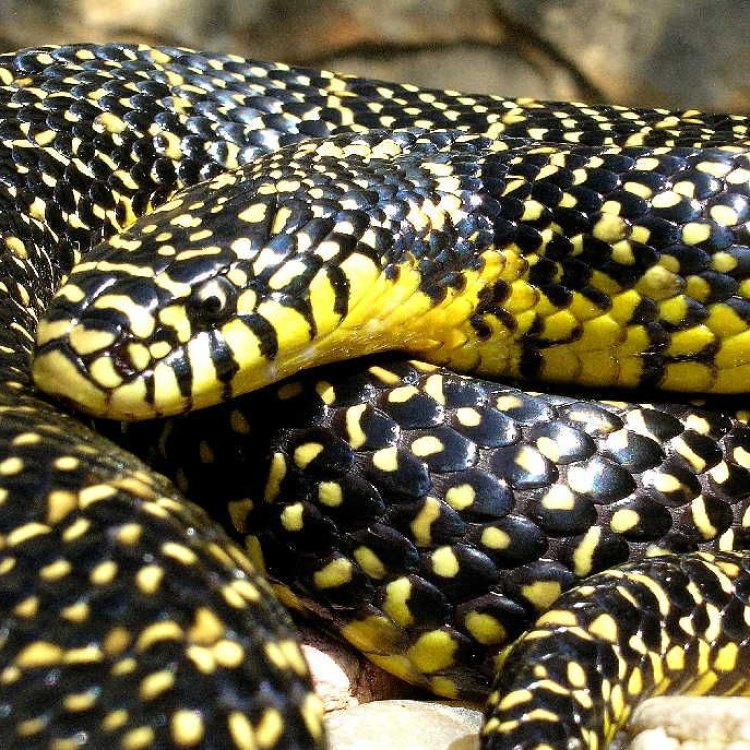
The Beautiful Speckled Kingsnake: A Master of Camouflage
Disclaimer: The content provided is for informational purposes only. We cannot guarantee the accuracy of the information on this page 100%. All information provided here may change without prior notice.


